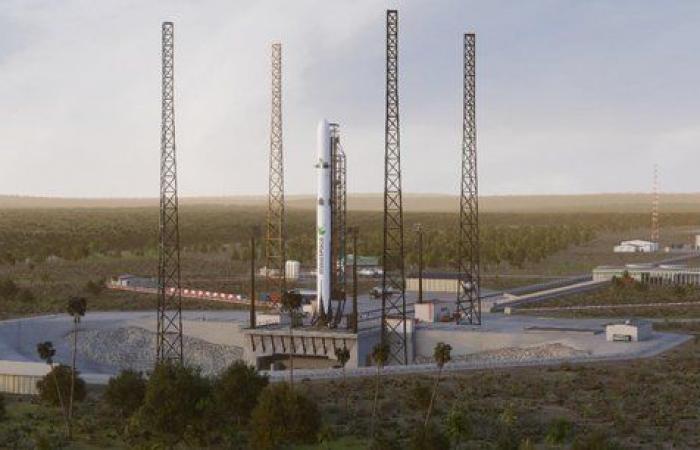Article updated on 09/27/2024 at 11:50 a.m.
Nearly 30 months after its creation, MaiaSpace has just passed a crucial milestone for its economic model. The ArianeGroup subsidiary, in startup mode, was selected by CNES following a call for applications to operate its reusable Maia launcher from the former Soyuz launch pad (ELS) located at the Guiana Space Center (CSG). Soyuz launches from Kourou were halted following Russia’s invasion of Ukraine in February 2022 following the very sudden departure of the Russians from Guyana. In total, six launch operators, including the Italian Avio and the German RFA One, were consulted for this launch pad, which was handed over by the ESA (European Space Agency) to CNES at the end of the summit. ministerial meeting in Seville in November 2023.
For MaiaSpace, this was one of its clearly stated priority objectives even if the company was also discussing launch bases in Europe with a certain number of others, such as Kiruna or Andoya as part of a plan B. Because for all operators, there are indeed significant advantages to launching in Guyana, particularly for inclined orbit satellite constellations. MaiaSpace will be able to begin adapting the launch pad to its needs by investing more than tens of millions of euros.
“The former Soyuz launch pad in Guyana (ELS) becomes the reference launch area for MaiaSpace’s reusable launcher,” the company explained in a press release published Thursday.
More than 1.5 tonnes in low Earth orbit
Why did MaiaSpace win this call for applications? According to our information, the ArianeGroup subsidiary was judged to be the strongest in technical, calendar and organizational terms. Thus, MaiaSpace was the only launch pad operator to have taken into account the coexistence with a second launcher on the site. Maia’s performance fits perfectly with the selection criteria of the CNES call for applications which included, among other things, the capacity to deploy at least 1.5 tonnes of payloads in low Earth orbit by 2027. Finally, the MaiaSpace project was deemed credible on an economic and financial level.
“We hope to reach profitability before reaching cruising speed. Before the end of the decade, we will be in positive cash flow and positive cumulative cash flow around the end of the decade or at the beginning of the 2030 decade. It takes several years to recover the initial investment and to start earning. money,” explained the executive president of MaiaSpace, Yohann Leroy, in an interview with La Tribune in June 2023.
In this context, the payload capacity of Maia, a light launcher, when not in a reusable configuration, could be substantially greater than 1.5 tonnes in a polar orbit (compared to 500 kilos when MaiaSpace recovers the first stage) . This significantly increases the resilience of the “business model” of the manufacturer of this launcher. MaiaSpace’s schedule also meets CNES’s calendar requirements. The company plans to operate its first orbital launch by the end of 2025, before launching commercial operations from 2026.


